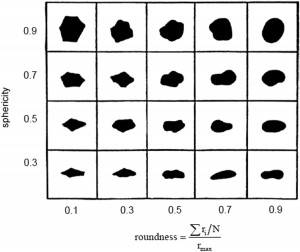Do you wear glasses or contact lenses?
Have you ever had an exam that used the famous “eye chart” with rows of letters that get smaller and smaller?
Here is some interesting info on that famous eye chart. You stay up late at night thinking about that eye chart, don’t you? Heh…
Anyway, the eye chart poster holds the record for the poster with the most number of copies printed in United States history.
Evah.
Even more posters were printed of the eye chart than were printed of the famous Farrah Fawcett red swimsuit poster!
To date myself, the poster I had hanging on my wall as a teenager in the 90s was Cindy Crawford in a US flag swimsuit.
But I divest…
That eye chart measures how close your vision is to 20/20. The 20/20 measurement has its origins from an ophthalmologist in Denmark named Dr. Herman Snellen. Some doctor here in the US adopted it, and the rest is history.
The 20/20 means “you see at 20 feet what most people see at 20 feet.” Someone with really good vision, say 20/15, sees at 20 feet what most people can see at 15 feet.
If you were a freakin’ eagle, you would have 20/5 vision. You could see an ant crawling around down on the ground from the roof of a 10 story building.
Now, I have an “eye chart” for my frac sand lab. It’s called the Krumbein Sloss chart, and it’s used to measure the sphericity and roundness of individual sand grains.

The sphericity and roundness test is kind of the “go/no-go” test for most sand explorers.
The sphericity means how close to a circle is the overall shape of the grain.
The roundness refers to any “corners” the sand might have, and how rounded they are.
Most ceramic proppants have a sphericity and roundness of 0.9 and 0.9. High quality frac sands are up there, too.
Many of my clients have beautiful silica sand, and the particles are circular, giving them a 0.7 or higher on their sphericity measurement.
But, many of the clients have sand with sharply rounded edges or even sharp angular edges. This ends up making their roundness measurement 0.4 or 0.5.
The American Petroleum Institute and ISO standard recommends a sphericity and roundness of 0.6 or higher for both.
Anyway, recently I was doing several sphericity and roundness tests for a client.
I have a microscopic picture of their sand particles on my computer screen, and I use graphics programs to add numbering to the grains.
I randomly number at least 20 grains.
Each grain gets a sphericity and roundness reading. I go back and forth from my screen to a large, “old school” printed copy of the Krumbein Sloss chart.
Then I average the readings for all the grains, and – wallah – there is your sphericity and roundness measurement.
I did several of these tests one evening (short turn around testing), and finally had to take a break because my eyes started to hurt. I went outside (into a thunder storm), and rested my eyes for a minute.
Then, I was back at it like a champion.
It’s one of the many risks we endure for our clients – eye strain! Ha
We would like you to give us some eye strain while we perform sphericity and roundness testing on your sand. We like eye strain.
We love eye strain.
Check out our other social media pages!